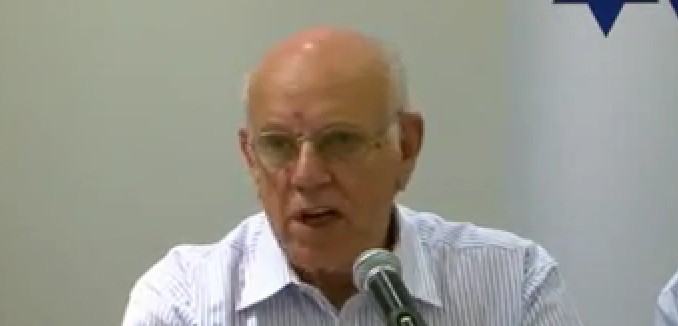The understandings reached last week regarding Iran’s nuclear program are full of loopholes, according to a paper (.pdf) written yesterday for Harvard’s Belfer Center by Dr. Ephraim Asculai, who worked for the Israel Atomic Energy Commission and is currently a senior research fellow for Israel’s Institute of National Security Studies.
Asculai pointed to several specific loopholes. He noted that the number of centrifuges allowed by the terms of the deal would allow Iran a breakout time of less than a year. (This estimate is consistent with that of Olli Heinonen, former deputy director-general of the International Atomic Energy Agency.) While the understandings reached last week would limit the amount of plutonium produced by the Arak reactor, they don’t prohibit other reactors that could produce plutonium.
Asculai also faulted the deal for failing to fully address the possible military dimension of Iran’s past nuclear work, noting that “[f]or almost two years, the agreement Iran signed with the IAEA on resolving outstanding questions on this subject submitted by the IAEA to Iran has been largely ignored by Iran.” He also noted that the understanding don’t address Iran’s missile development program at all, even though it is developing missiles capable of delivering a nuclear payload.
In addition to these specific critiques, Asculai questioned more general omissions within last week’s understandings.
Some of the general provisions of the agreement are no less disturbing. The document notes the goal of prolonging the timeline for a breakout as one year. The calculation of this timeline is not a simple matter, and must come under a continuous review process. There has been, for a long time, an implied reliance on intelligence for the provision of timely information, critical for the success of verification of the compliance of any deal. Unfortunately, history is replete with cases of missed, overlooked or wrongly interpreted intelligence information. The verification mechanism denoted in the paper does not mention some essential activities that should complement the Additional Protocol ones: the access, anywhere at any time in order to search for concealed facilities, access to personnel and to documentation. These capabilities were at the core of the success of verification in Iraq after the first Gulf War.
This brings us to the issue of resolving future disagreements between the parties to the final, comprehensive, agreement. A mechanism will be set up to resolve these issues, and if resolution is not achieved, the UN sanctions could be re-imposed. Anyone familiar with the international dispute resolving mechanism must be aware that this could take years to complete, and the result could be very uncertain. This includes the possible use of the Security Council veto powers, rendering the renewed imposition of sanctions nearly impossible, depending on the international situation. Thus, the one year breakout time could be much too short.
Asculai’s concerns about the process of identifying and responding to violations are similar to those expressed by Heinonen yesterday in an interview with The Times of Israel. President Barack Obama also recently made a comment suggesting that responses to Iranian violations might not be immediate.
Asculai concludes that given Iran’s history “of not adhering to agreements,” it can be “expected to utilize any loophole in the agreement to its advantage.” To be effective, a “final deal must take care to shore up the above and other loopholes.”
[Photo: World Jewish Congress / YouTube ]




